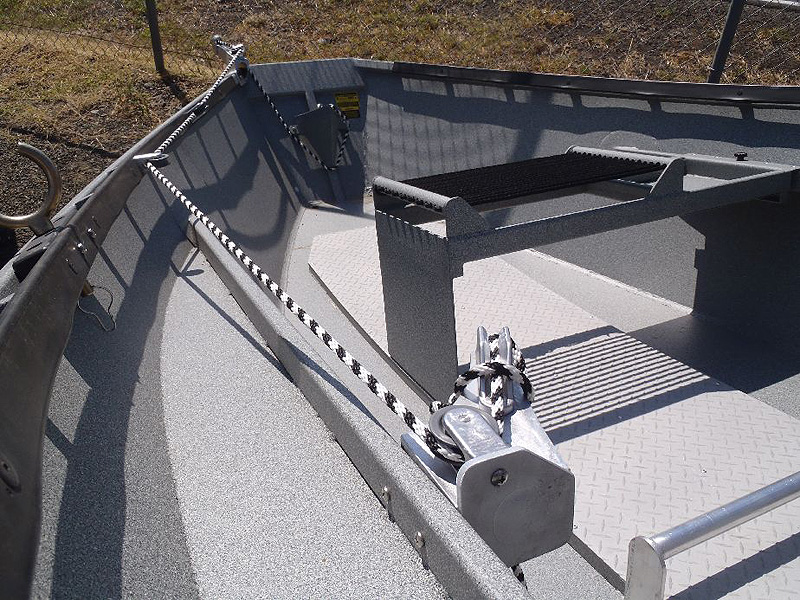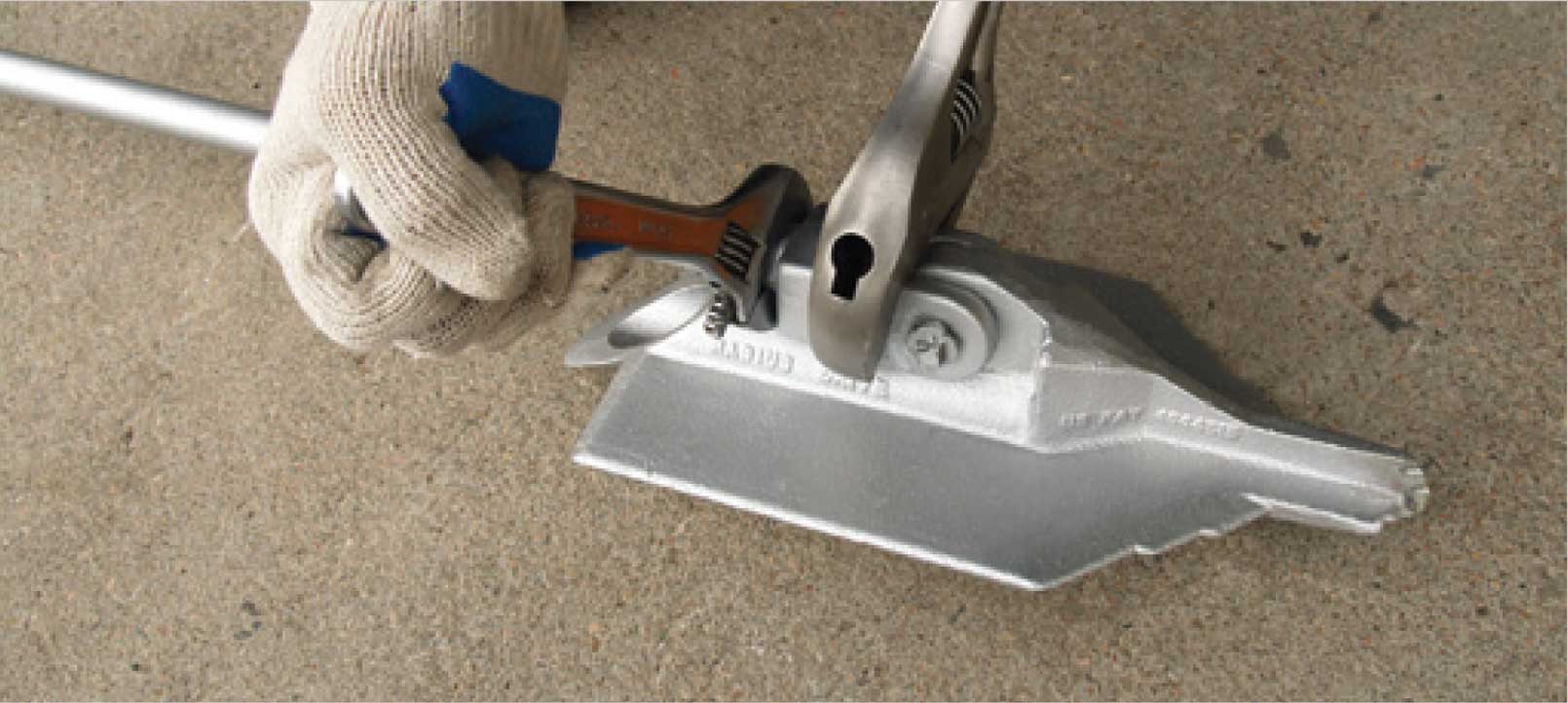The Function of An Earth Anchor in Improving Structural Stability
The Function of An Earth Anchor in Improving Structural Stability
Blog Article
Efficient Anchor Solutions Designed for Maximum Stamina
The style of effective support systems is essential in making certain optimal toughness and integrity throughout different applications, particularly in civil and marine engineering. By using cutting-edge products and progressed design methods, these systems not just boost holding power however likewise adapt to difficult ecological problems. As we check out the different sorts of anchor systems and the materials that underpin their performance, it becomes evident that the future of anchoring technology might hold also higher improvements. What implications do these growths have for safety and security and efficiency standards in the industry?
Relevance of Anchor Equipments
Support systems play an important role in various applications, from aquatic building and construction to offshore exploration and even in the security of structures ashore. Their main feature is to offer safe and secure holding power, making certain that structures continue to be stable and safe under different ecological conditions. In aquatic environments, anchors are crucial for mooring vessels, stopping drift as a result of wind, currents, or waves. Without trustworthy anchoring, ships may go to threat of collision or grounding, causing significant economic and environmental repercussions.
Along with aquatic applications, anchor systems are essential in civil engineering, particularly in the construction of preserving walls, bridges, and buildings in geologically challenging areas. These systems assist disperse tons successfully, combating forces such as soil pressure and seismic activity. The value of anchor systems includes the renewable resource market, where they protect wind turbines and offshore platforms, adding to the security and effectiveness of energy generation.
Ultimately, the efficiency of an anchor system is fundamental to the safety and security, toughness, and functionality of various structures, making their style and implementation a critical element in engineering and building and construction methods across multiple industries.
Ingenious Materials in Support Layout

Modern innovations in materials scientific research have significantly transformed support layout, boosting efficiency and sturdiness. The consolidation of high-strength alloys and composite materials has actually led to supports that can hold up against extreme environmental conditions while preserving architectural honesty. These ingenious products not just offer premium tensile toughness yet likewise lower weight, boosting ease of setup and handling.
One remarkable growth is the usage of carbon fiber enhanced polymers (CFRP), which supply excellent rust resistance and high strength-to-weight proportions. This allows for the design of supports that are both extremely resilient and light-weight, making them ideal for marine applications where direct exposure to saltwater can cause material destruction.
In addition, improvements in finishings-- such as sophisticated epoxy and galvanization-- further secure steel anchors from deterioration, extending their solution life. These coatings can be tailored to meet particular environmental challenges, making certain that anchors perform accurately even in severe problems.
Additionally, the assimilation of smart materials, which can adjust to changing tons and ecological elements, is leading the way for future anchor layouts. These growths emphasize a trend towards higher effectiveness and dependability in securing options, eventually enhancing safety throughout numerous applications.
Kinds of Effective Support Systems
Effective anchoring solutions are vital for guaranteeing stability and security in numerous applications, from construction to marine operations. Numerous kinds of effective anchor systems stand apart for their effectiveness and adaptability to various environments.
One preferred kind is the screw anchor, which uses a helical design to supply premium holding power in soil and soft ground. These supports are particularly useful in short-term frameworks and can be quickly eliminated and description reused.
One more favored system is the driven stack anchor, typically used in aquatic and heavy building projects. These supports are driven deep right into the ground, providing excellent resistance to side forces, making them suitable for sustaining huge frameworks.
For marine applications, the mooring buoy anchor system is essential. This system consists of resilient devices attached to anchors on the seabed, enabling vessels to continue to be secure while decreasing drag from winds and currents.
Finally, the deadweight anchor system counts on heavy weights to provide stability and is frequently used in overseas installations. Each sort of anchor system is made to satisfy certain needs, making sure the security and stability of structures and vessels in different conditions.
Safety Standards and Rules
Ensuring the safety and security and reliability of anchoring systems includes adherence to stringent safety criteria and guidelines. These standards are established by different companies, consisting of the American Society for Testing and Products (ASTM), the International Organization for Standardization (ISO), and neighborhood building codes. Compliance with these guidelines is crucial to guarantee that securing systems can hold up against ecological stress and anxieties and loads, reducing the threat of failure.
Evaluating and accreditation processes are essential elements of safety and security standards. Securing systems need to undergo rigorous evaluations, consisting of tensile strength tests, fatigue tests, and environmental impact assessments. These examinations assist establish the systems' performance under real-world conditions, guaranteeing they satisfy or surpass the required safety thresholds.
Moreover, manufacturers are needed to give in-depth specs and directions for setup and maintenance, which are indispensable to upholding safety and security criteria. Regular assessment and find more info maintenance methods have to likewise be established to determine prospective weak points with time.
Future Patterns in Support Technology
The future of support modern technology is poised for considerable improvements, driven by the enhancing demand for enhanced safety and performance in construction and design applications. Advancements are anticipated in products, style, and setup techniques, which will boost the toughness and durability of support systems.
One arising trend is the integration of clever modern technology right into anchor systems. Earth Anchor. By incorporating sensing units, these systems can keep an eye on anxiety, tons, and environmental problems in real-time, enabling positive maintenance and raised integrity. Additionally, advancements in composite materials may bring about lighter, yet more powerful supports that can stand up to severe conditions, reducing the total weight of frameworks


In addition, modular support systems are getting traction, enabling easier installation and flexibility to numerous task requirements. Earth Anchor. As the sector embraces automation, robot installation methods could even more enhance the anchoring procedure, improving efficiency and accuracy
Final Thought
In conclusion, reliable support systems play a crucial function in making sure the security and security of civil and marine design tasks. Adherence to safety requirements and laws even more highlights the significance of dependability in anchor systems.
The style of effective anchor systems is vital in guaranteeing optimal toughness and reliability across different applications, especially in civil and aquatic design. As we explore his comment is here the various types of anchor systems and the materials that underpin their effectiveness, it ends up being apparent that the future of securing technology may hold also higher advancements.Guaranteeing the safety and security and integrity of securing systems involves adherence to stringent safety standards and guidelines.In conclusion, reliable support systems play a critical duty in making sure the security and safety of civil and aquatic design tasks. Adherence to safety requirements and laws additionally highlights the importance of reliability in support systems.
Report this page